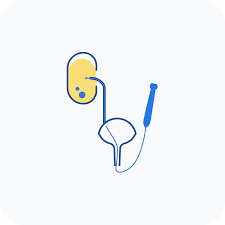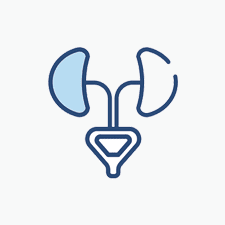OUR SERVICES
SERVICES
Dr Siddharth Sararf

PCNL
PCNL (Percutaneous Nephrolithotomy) is a minimally invasive procedure designed to remove large kidney stones through a small incision in the skin. This technique is particularly effective for stones larger than 2 cm, providing a direct approach to stone removal while minimizing damage to surrounding tissues. Dr. Siddharth Saraf, an experienced urologist, uses PCNL to offer patients an efficient solution with quicker recovery times and reduced risk of complications. This advanced procedure is ideal when traditional treatments, like shockwave lithotripsy, are not effective for larger or more complex stones.

URSL
Ureterolithotripsy is a precise endoscopic procedure used to break down and remove stones from the ureter using a telescopic camera (ureteroscope). This technique is ideal for stones, whether smaller or larger than 5mm, that are causing obstruction to the kidney and are unable to pass naturally over time. Dr. Siddharth Saraf, an expert urologist, performs Ureterolithotripsy with advanced technology to ensure minimal discomfort and a quicker recovery for patients. This procedure provides an effective solution for ureteral stones, offering a targeted approach to stone removal with a focus on patient safety and comfort.

RIRS
Retrograde Intrarenal Surgery (RIRS) is a minimally invasive procedure used to remove kidney stones by inserting a viewing tube called a flexible endoscope. Dr. Siddharth Saraf, a skilled urologist, performs RIRS by carefully guiding the scope through the urethra, into the bladder, and further into the ureter to reach the urine-collecting part of the kidney. This technique allows for precise stone removal without the need for large incisions, offering patients a quicker recovery and less postoperative discomfort. RIRS is an effective solution for kidney stones, especially those located in difficult-to-reach areas.

TURP
TURP (Transurethral Resection of the Prostate) is a surgical procedure commonly used to treat urinary issues caused by an enlarged prostate. During TURP, a resectoscope is inserted through the urethra, allowing Dr. Siddharth Saraf to view and remove excess prostate tissue that obstructs urine flow. Although TURP has traditionally been the most effective treatment for an enlarged prostate, newer minimally invasive procedures are gaining popularity. These alternative treatments generally offer fewer complications, a quicker recovery time, and enhanced patient comfort while effectively addressing prostate enlargement. Dr. Siddharth Saraf provides expert care in both TURP and modern alternatives for optimal outcomes.

TURBT
TURBT (Transurethral Resection of a Bladder Tumor) is a procedure used to treat bladder cancer by removing tumors within the bladder. Dr. Siddharth Saraf may recommend TURBT to fully examine the bladder under anesthesia (general or spinal). A resectoscope, similar to a cystoscope, is inserted through the urethra into the bladder, allowing the doctor to visualize and remove the tumor using an electrified wire loop. This loop not only removes the tumor but also cauterizes (seals off) blood vessels to prevent bleeding, a technique known as electrocauterization or fulguration. TURBT is highly effective and can be repeated with minimal risk, offering excellent results for patients with bladder cancer.

Bladder Stone
Surgical options for patients with symptomatic bladder stones include open cystolithotomy, percutaneous cystolithotomy, or cystoscopic laser lithotripsy with stone extraction (cystolithalopaxy), which involves using a scope to visualize and crush the stone. Dr. Siddharth Saraf carefully evaluates factors such as your bladder and urethral anatomy, stone size, and body type to determine the most appropriate approach. In men with enlarged prostates and bladder stones, it is also important to consider whether a prostate procedure is necessary during stone removal. Each patient's unique situation plays a significant role in deciding the optimal treatment for bladder stones.

